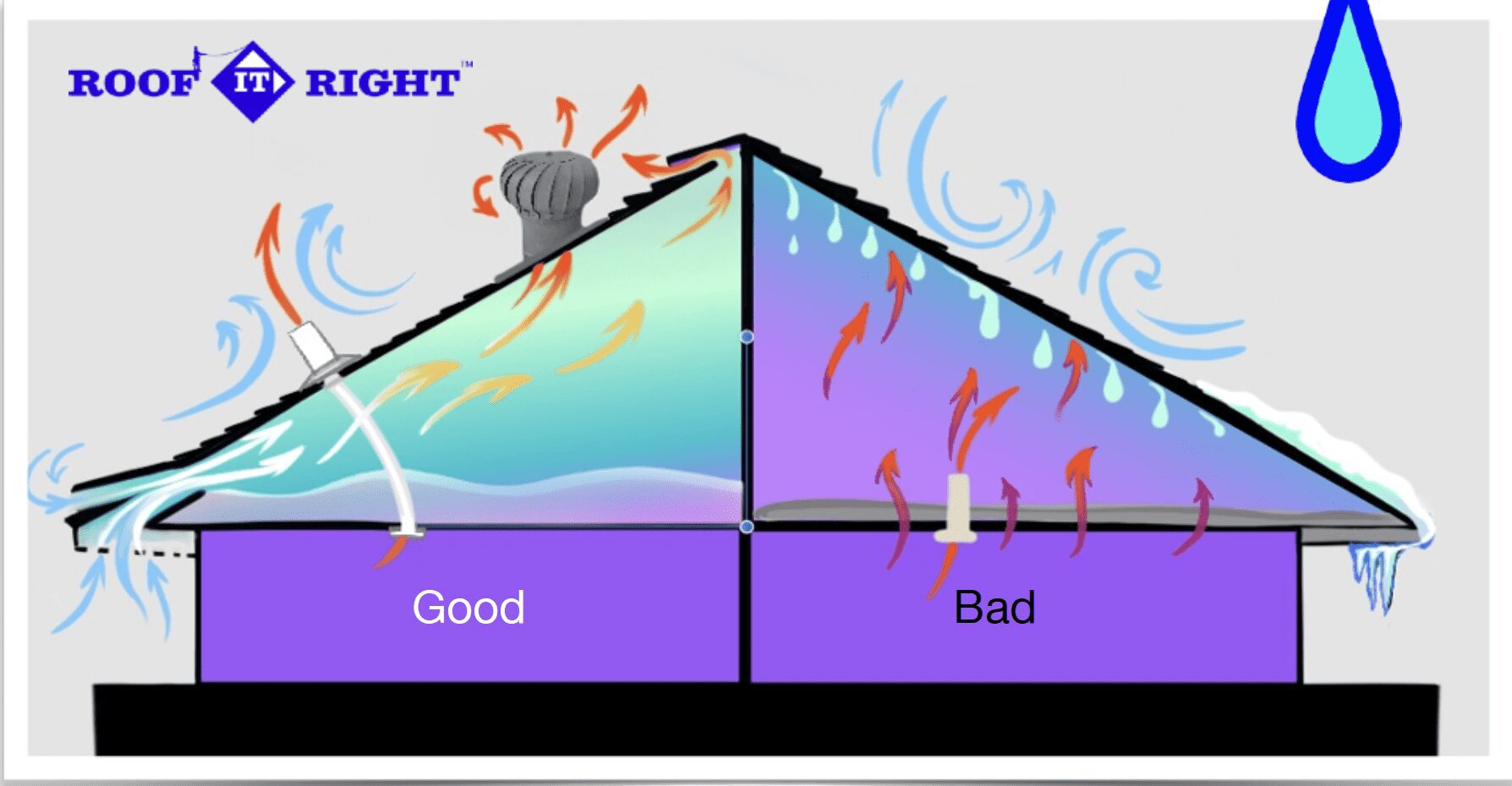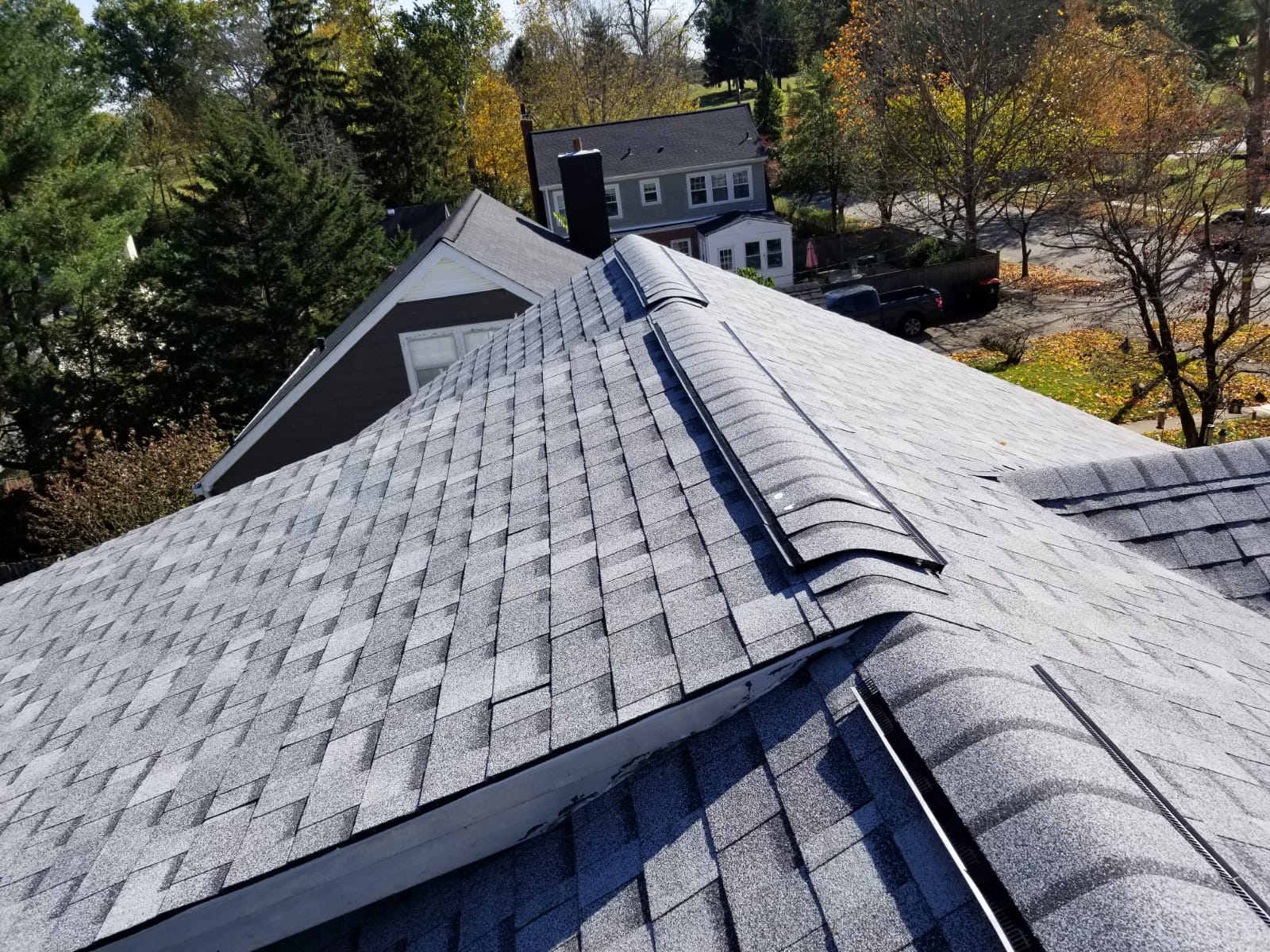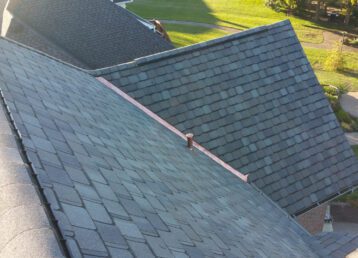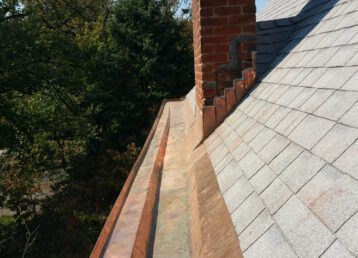Roof and Attic Insulation
Speaking of ventilation, it works hand-in-hand with your insulation. Ventilation protects your insulation from sucking in too much moisture. Moisture causes insulation to lose its ability to trap heat. Think about it; it would be like trying to warm up while wearing wet clothes. Insulation needs to stay dry in order to keep cool air or heat in.
The measurement of insulation’s ability to Resist heat transfer is called R-value. The higher the number, the more resistant the insulation is. According to energystar.gov, the recommended level for most attics is R-38 or about 10-14 inches depending on the type of insulation. There are two general ways to install insulation.
Blown-in: Confetti-like, loose-fill material such as cellulose (mostly recycled paper), glass wool, or rock wool that is blown in with a special machine into cavities or covering an attic floor.
Blanket Insulation: Comes in batts (pre-cut panels) or rolls that can be cut and trimmed to fit in between rafters and other spaces.
The big problem that we notice in Kentucky homes is that generally there is not enough insulation to meet the recommended R-value. And, unfortunately, installing an extra vent on the roof will not compensate for insufficient insulation or improve cooling or heating costs.
COMMON INTAKE VENT OPTIONS IN LOUISVILLE METRO:
Soffit Intake Vents (recommended):
Soffit intake vents are installed in the underside of your roof’s eaves.
DA-4 intake vents:
In homes that did not have soffit vents built into them, DA-4, or deck air vents are a viable option. They are installed near the bottom of your roof’s edge as illustrated below.
Gable Vents:
Gable vents are intake vents installed under the peak of a gable. The disadvantage of gable vents is that they miss the warm humid area below the vents.
COMMON EXHAUST VENT OPTIONS IN LOUISVILLE METRO:
Slant vent
A slant vent is also called a turtle or a box vent. It covers 51 square inches of exhaust flow.
Ridge vents
Ridge vents are very elegant looking and leak less, if the roof is not too low pitch. With a net free vent area of 20 square inches per linear foot, they boast outstanding performance. A sufficient length of ridge is required for ridge vents.
Turbine or Whirlybird vents
Turbines or whirlybirds have a higher flow capacity of 95 square inches of net free area airflow each. Another plus is the maintenance-free top and bottom dual bearing system.
Power Vent
A power vent could resolve issues with ventilation, but might require electrician fees to wire or re-connect it. The drawbacks of a power vent are that it draws temperature from the house, is noisy, is costly to replace, and is easy to miss when it’s broken. And a broken vent has a huge impact on the frame, roof deck, and roofing materials.
A common power vent used in Louisville Metro is a 1,500-CFM power vent (It’s 1,500 cubic feet of air flow per minute and handles up to 2,100 square feet of attic space).
Note: Asphalt shingles installed over an insulated roof deck (insulation directly against the roof deck, not the attic floor) without sufficient ventilation (volted ceiling, cathedral ceiling, spray foam roof deck) do not qualify for manufacturer’s extended warranties. Full warranty over such a deck is for 10 years ONLY for residential homes and 5 years for non-residential homes.













